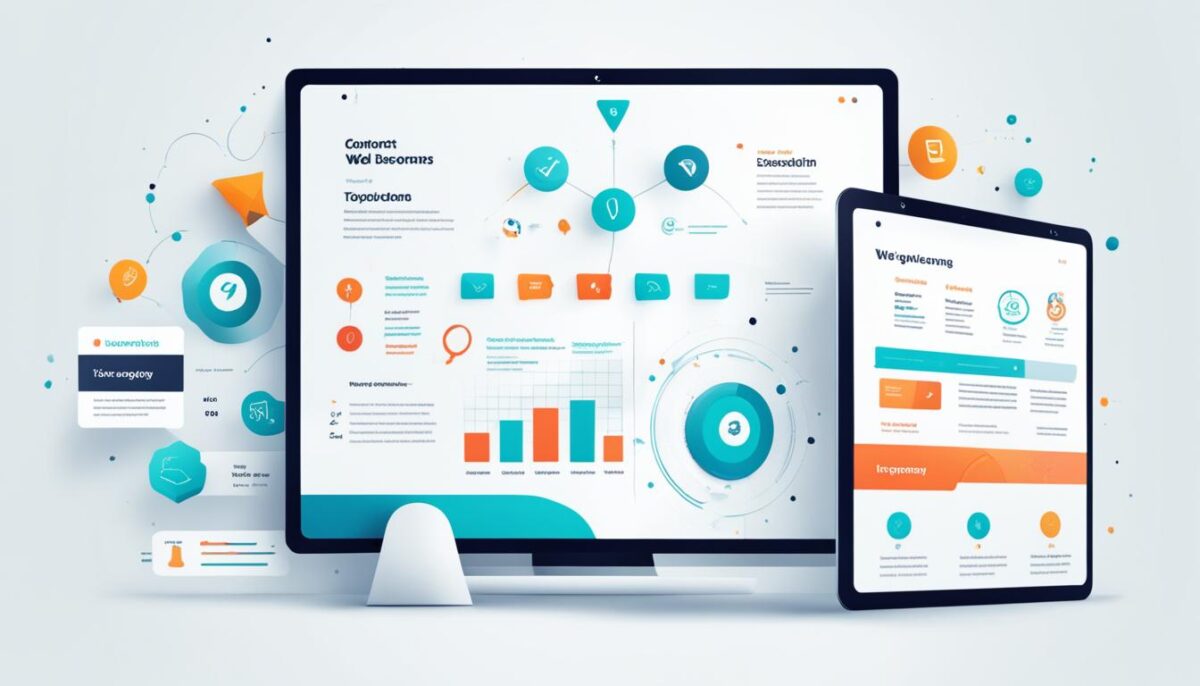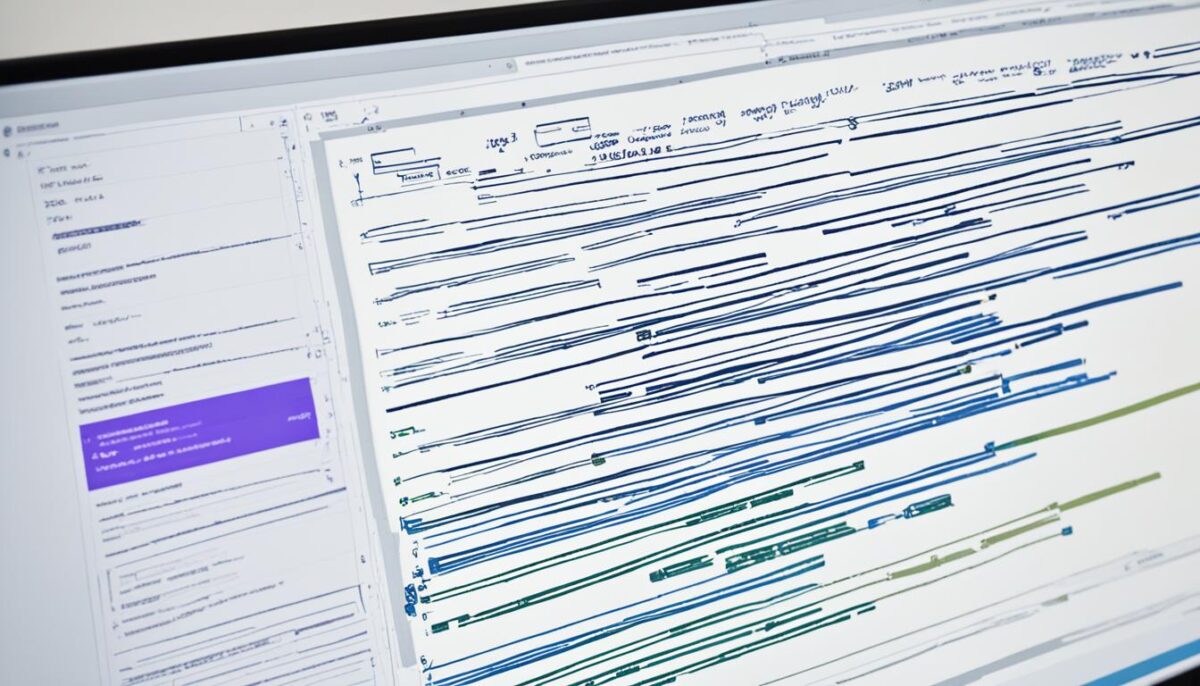Welcome to our article on web design! In today’s digital age, having a strong online presence is crucial for businesses and individuals alike. But what exactly is web design, and how does it impact user experience, aesthetics, functionality, and overall online presence?
Web design is more than just creating visually appealing websites. It is the art and science of combining aesthetics and functionality to deliver an engaging user experience. It involves carefully crafting the layout, color scheme, typography, and other visual elements to create a cohesive and impactful website.
When done right, web design not only captivates visitors visually but also enhances usability and navigation, ensuring a seamless browsing experience. This, in turn, leads to increased user engagement, better conversion rates, and ultimately, more success for your online presence.
In the next sections, we will dive deeper into the different aspects of web design. We will explore the artistic elements that make up a well-designed website, such as layout, color scheme, and typography. We will also discuss the functional aspects, including responsive design techniques, intuitive navigation, usability, and accessibility considerations. By the end of this article, you will have a comprehensive understanding of how web design contributes to the success of your online presence.
So let’s begin our journey into the world of web design and discover how it can transform your online presence and drive your success!
The Art of Web Design
Web design is not just about functionality; it is also an art form that engages users and creates a lasting impression. In this section, we will explore the artistic aspects of web design, focusing on visual elements such as layout, color scheme, and typography.
Visual elements play a crucial role in the overall aesthetic appeal of a website. The layout determines the arrangement and organization of content, ensuring a seamless browsing experience for users. A well-designed layout guides visitors through the website, highlighting important information and providing a clear hierarchy of content.
The color scheme, another vital visual element, sets the tone and mood of the website. By carefully selecting colors that align with the brand’s identity and target audience, web designers can evoke specific emotions and enhance user engagement. Whether it’s a vibrant and energetic scheme or a soothing and serene palette, the color choices contribute to the overall user experience.
Typography, the art of selecting and arranging typefaces, further enhances the visual appeal and readability of a website. By choosing the right font styles, sizes, and spacing, designers can create a harmonious and cohesive visual language that complements the website’s purpose and message. Typography not only enhances the aesthetics but also improves the overall user experience by ensuring content is easily legible and accessible.
Through the careful consideration of visual elements such as layout, color scheme, and typography, web designers can create visually appealing and cohesive websites that effectively communicate the intended message. The combination of artistic elements with functional design choices enhances user engagement and leaves a lasting impression.

Optimizing Functionality for Effective Web Design
In the world of web design, it’s not enough for a website to simply look stunning; it must also function seamlessly across various devices and screen sizes. This is where responsive design comes into play. Responsive design techniques ensure that your website adapts and responds to different screen resolutions, creating an optimal user experience regardless of whether it’s accessed on a desktop, laptop, tablet, or smartphone.
However, functionality goes beyond just responsiveness. It also encompasses the way users navigate through your website and interact with its features. Intuitive navigation is key to ensuring that visitors can easily find the information they’re looking for, resulting in a positive user experience. In addition, usability plays a crucial role in web design by focusing on making websites user-friendly and accessible to all individuals, including those with disabilities.
Accessibility is an essential consideration in web design. It involves making sure that all users, regardless of their abilities, can access and use your website. This includes implementing features like alternative text for images, captions for videos, and keyboard-friendly navigation options. By prioritizing accessibility, you not only comply with legal requirements but also create an inclusive online environment for all users.
When all these functional aspects are optimized in web design, it leads to an effective and successful website. Users can effortlessly navigate through its pages, access the information they need, and have a positive overall experience. By prioritizing responsive design, intuitive navigation, usability, and accessibility, your website can truly stand out in today’s digital landscape.



